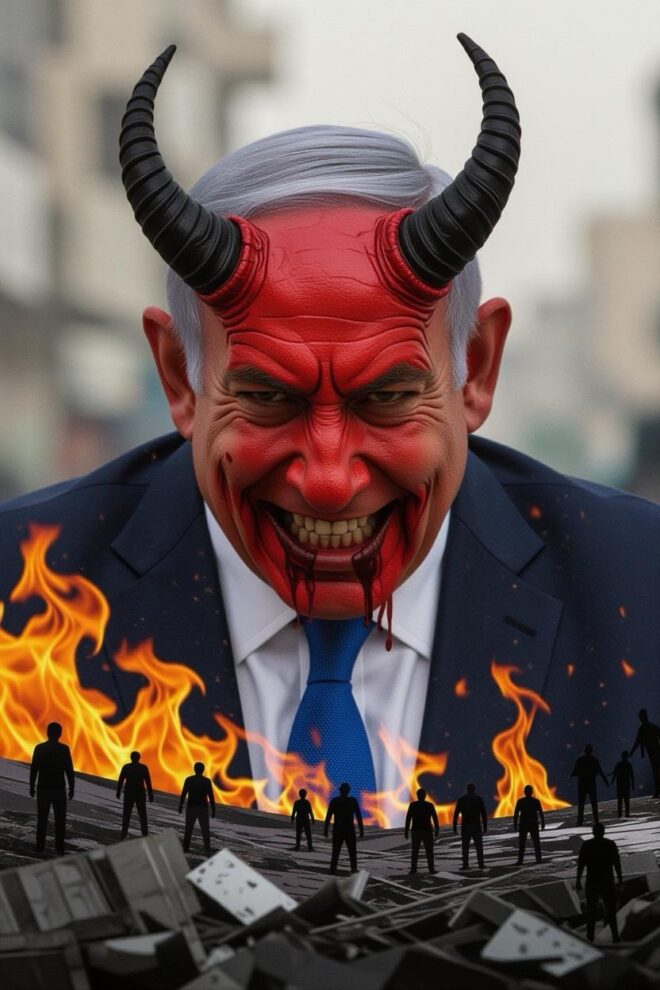
Introduction
Let’s be absolutely clear: Israel is using US bombs, Israel is using US planes, Israel is using US guns and bullets, Israel is using US missiles… all under the cover of US diplomatic impunity. This is as much America’s genocide as it is Israel’s. These facts capture a deeply contentious narrative surrounding the ongoing Israel-Gaza conflict. This truncated rhetoric clearly accuses the United States of direct involvement in what many see as a “genocide,” reflects a growing chorus of criticism from activists, human rights organisations and international observers. Since Hamas’s attacks on October 7, 2023, which killed approximately 1,200 Israelis and led to the abduction of over 250 hostages, Israel’s military response in Gaza has resulted in tens of thousands of Palestinian deaths, widespread destruction, and a humanitarian crisis described by some as catastrophic. By August 2025, nearly two years into the conflict, Gaza’s 2.3 million residents have faced devastation, including famine, displacement, and relentless bombardment.
The US-Israel relationship is one of the most enduring alliances in modern geopolitics, rooted in shared strategic interests, historical ties, and mutual security commitments. The US has provided Israel with over $174 billion in bilateral assistance since 1948, much of it military aid, making Israel the largest cumulative recipient of American foreign aid. This support includes advanced weaponry, intelligence sharing, and diplomatic backing at international forums like the United Nations. Critics argue that this aid enables Israel’s actions, framing the US as a co-perpetrator in alleged war crimes. Proponents, including US and Israeli officials, maintain that the aid is essential for Israel’s self-defence against terrorist threats like Hamas, which governs Gaza and has launched thousands of rockets into Israeli territory.
This post explores the extent of US involvement in the conflict, dissecting military aid, diplomatic protection and the contentious label of “genocide.” Drawing from a diverse array of sources – including US government reports, human rights organisations, Israeli perspectives and international analyses – it aims to provide a substantiated examination. While the post does not shy away from politically charged claims, all assertions are grounded in evidence from stakeholders across the spectrum. Assumptions of bias in media viewpoints are acknowledged, with an emphasis on factual substantiation over partisan narratives. The goal is to illuminate whether US support constitutes complicity in genocide or legitimate assistance to an ally under threat.
Historically, US aid to Israel began modestly in the 1950s but escalated after the 1967 Six-Day War, when Israel emerged as a key Middle Eastern ally amid Cold War dynamics. By the 1970s, annual aid packages included economic grants and military financing. The 2016 Memorandum of Understanding (MOU) pledged $38 billion in military aid from 2019 to 2028, emphasising Israel’s qualitative military edge over regional adversaries. Post-October 2023, this aid surged, with emergency packages bypassing congressional oversight to expedite deliveries. For instance, in March 2025, Secretary of State Marco Rubio authorised $4 billion in expedited military assistance, including munitions and aircraft components. This aid is not merely financial; it encompasses joint military exercises, intelligence cooperation, and technology transfers, such as the Iron Dome missile defence system.
Diplomatic impunity refers to the US’s consistent use of its UN Security Council veto to shield Israel from resolutions condemning its actions. Since 1972, the US has vetoed over 50 such resolutions, including multiple calls for ceasefires in Gaza since 2023. This protection extends to opposing International Criminal Court (ICC) investigations into Israeli officials, with the US imposing sanctions on ICC personnel in 2020 and reiterating threats in 2024.
The genocide allegation stems from the 1948 Genocide Convention, which defines genocide as acts committed with intent to destroy, in whole or in part, a national, ethnic, racial, or religious group. Organisations like Amnesty International and Human Rights Watch have concluded that Israel’s actions in Gaza meet this threshold, citing mass killings, forced displacement, and the imposition of conditions leading to physical destruction. Israeli officials and supporters vehemently deny this, arguing that operations target Hamas militants, not civilians, and that humanitarian aid efforts demonstrate lack of genocidal intent.
Historical Context of US Aid to Israel
The foundation of US military and economic support for Israel dates back to the state’s founding in 1948, but it intensified in the post-World War II era as part of broader geopolitical strategies. Initially, US aid was limited, with President Truman recognising Israel but providing minimal assistance amid Arab-Israeli tensions. By the 1960s, however, Israel’s strategic value as a counterweight to Soviet influence in the Middle East became apparent. The 1967 Six-Day War, where Israel decisively defeated Egypt, Jordan, and Syria, marked a turning point. US aid surged from $13 million in 1966 to over $100 million annually by 1971, including Phantom jets and other advanced weaponry.
The 1973 Yom Kippur War further solidified this alliance. The US airlifted $2.2 billion in emergency aid to Israel, offsetting Soviet support for Arab states. This period established the pattern of annual aid packages, formalised in the 1970s under Presidents Nixon and Carter. By 1985, aid reached $3 billion yearly, split between economic and military components. The end of the Cold War did not diminish this support; instead, it evolved into a 10-year MOU framework. The 2007 MOU under President Bush pledged $30 billion from 2009-2018, followed by the 2016 agreement under Obama for $38 billion from 2019-2028.
Economic aid phased out by 2008, as Israel’s economy grew robustly, but military financing remained dominant. Foreign Military Financing (FMF) allows Israel to purchase US-made weapons, with unique privileges like early access to funds and the ability to spend 26.3% on domestic production – exceptions not granted to other recipients. This aid has funded systems like F-35 jets, David’s Sling missiles, and precision-guided munitions.
Critics argue this aid fosters dependency and enables aggressive policies. Palestinian advocates point to its role in settlements and occupations, while some US policymakers question its value amid fiscal constraints. However, bipartisan support persists, with Congress often approving supplemental packages. For example, in 2024, a $17.9 billion aid bill passed despite debates over Gaza’s humanitarian impact. Israeli perspectives emphasise aid as vital for survival in a hostile region, whilst US officials frame it as promoting stability, with joint initiatives like the Arrow missile defence system.
Post-October 2023, aid accelerated. The Biden administration approved $14.3 billion in supplemental funding, including $4 billion for Iron Dome replenishment. By December 2024, total US spending on Israel’s operations exceeded $22 billion, encompassing munitions and regional deployments. Trump-era policies, like bypassing Congress for arms sales, continued under Biden, with $3 billion in bombs approved in February 2025. This historical trajectory underscores how US aid has evolved from Cold War pragmatism to an entrenched alliance, setting the stage for current controversies in Gaza.
US Military Support in the Current Conflict
Since October 7, 2023, US military aid has been pivotal in Israel’s Gaza operations. The US has provided over $22.76 billion in support, including weapons used in airstrikes and ground incursions. Specifics include MK-84 bombs, BLU-117 munitions, and Predator warheads, often deployed in densely populated areas.
US-supplied F-35 jets and F-16 planes have conducted thousands of sorties over Gaza. Israel operates over 50 F-35s, funded partly by FMF, equipped with precision-guided missiles like Hellfire and JDAMs. These aircraft have been linked to strikes on hospitals and refugee camps, which Israel claims target Hamas infrastructure but critics say cause disproportionate civilian harm.
Guns and bullets from US manufacturers, such as M4 rifles and 5.56mm ammunition, equip Israeli forces. The US approved $500 million in small arms sales in 2024, part of broader FMF allocations. Missiles, including Spike and Tamuz systems, are co-produced with US technology, used in targeted assassinations.
Intelligence sharing amplifies this support. US Special Operations forces and CIA personnel assist in targeting Hamas leaders, with drone overflights and satellite reconnaissance. Naval assets, like carrier groups in the Mediterranean, provide deterrence.
Israeli officials assert this aid is essential for dismantling Hamas, with 751 active FMS cases valued at $39.2 billion as of April 2025. However, human rights groups document US weapons in attacks killing civilians, fuelling complicity claims.
Aid delivery has been controversial. The Gaza Humanitarian Foundation (GHF), a US-backed initiative, has been criticised as a “death trap,” with reports of Israeli fire on aid seekers. UN figures show 88% of aid trucks looted, but blame is disputed.
This support, while justified as defensive, raises questions about US accountability in the conflict’s toll.
Diplomatic Impunity
The US has long provided Israel with diplomatic cover, particularly at the UN, vetoing resolutions critical of Israeli actions. Since 1948, the US has used its veto 83 times, over half related to Israel-Palestine. In the current conflict, the US vetoed ceasefire resolutions in December 2023, February 2024, and June 2025, arguing they lacked conditions for hostage release and Hamas disarmament.
This impunity extends to opposing ICC probes. In 2024, the US sanctioned ICC officials investigating Gaza, echoing 2020 actions. Palestinian President Abbas criticised US support in his 2024 UN speech, noting vetoes enable continued operations. Israeli views see this as vital alliance affirmation, with Netanyahu praising US backing. Critics, including UN experts, argue it perpetuates impunity, allowing alleged violations.
US policy also includes barring Palestinian officials from UN events, as in August 2025. This diplomatic shield is seen by some as enabling genocide, by others as protecting an ally.
Allegations of Genocide
Allegations that Israel is committing genocide in Gaza have intensified, with Amnesty International concluding in December 2024 that acts meet the Genocide Convention’s criteria, including intent to destroy Palestinians as a group. Human Rights Watch reported extermination crimes and genocidal acts in December 2024, citing starvation and attacks on protected sites. A UN Special Committee in November 2024 found Israel’s warfare consistent with genocide characteristics. Israeli human rights groups like B’Tselem accused Israel of genocide in July 2025, marking a first. Evidence includes over 60,000 deaths, famine, and displacement of 90% of Gazans.
Arguments against genocide emphasise a lack of intent. The American Jewish Committee lists five reasons: operations target Hamas, not civilians; aid provision (though disputed); population growth; legal compliance claims; and comparisons to historical genocides. ADL rebuts allegations, noting Israel’s warnings to civilians and Hamas’s use of human shields. Legal scholars argue the conflict resembles asymmetric warfare, not genocide.
The ICJ’s 2024 ruling on South Africa’s case ordered Israel to prevent genocide but did not confirm it. Expert opinions vary, with some Australian scholars divided. US complicity ties into these debates, as aid enables actions under scrutiny.
Israeli Perspective and Counterarguments
From an Israeli viewpoint, the Gaza conflict is existential self-defence against Hamas, justified by the October 7 atrocities. Pew surveys show 39% of Israelis approve the response, with declining support for permanent Gaza control. US aid is seen as critical, enabling operations while minimising risks. Debates within Israel focus on war aims: eliminating Hamas versus hostage recovery. Netanyahu’s government prioritises military victory, crediting US support. Critics like former Biden officials argue US leverage was underused to curb excesses.
Aid blocking is blamed on diversions by Hamas, not Israeli policy, per UN data. Post-war governance proposals vary, from re-occupation to international administration. These perspectives counter genocide claims by framing actions as targeted and necessary.
US Public Opinion and Internal Debates
Public opinion in the United States regarding the Israel-Gaza conflict has undergone significant shifts since the escalation in October 2023, reflecting growing disillusionment with Israel’s military actions and US involvement. By mid-2025, approval ratings for Israel’s conduct in Gaza have reached historic lows, influenced by prolonged media coverage of civilian casualties, famine conditions, and international criticism. A Gallup poll conducted in July 2025 found that only 32% of Americans approve of Israel’s military actions in Gaza, down from 50% in November 2023 and marking the lowest support since the poll began tracking the issue with Democrats increasingly critical. This decline is echoed in other surveys; for instance, a CNN poll from July 2025 indicated that just 23% of Americans view Israel’s actions as fully justified, a sharp 27-point drop from October 2023. Similarly, an Al Jazeera-reported poll in August 2025 revealed that 60% of Americans disapprove of the military actions, with disapproval rising steadily as the conflict persists.
A particularly striking development is the increasing perception among Americans that Israel’s actions constitute genocide. Polls from August 2025 show that half of registered US voters believe Israel is committing genocide in Gaza, with this view held by 77% of Democrats, 51% of independents, and a smaller but notable portion of Republicans. This sentiment is even stronger among younger demographics; a New York Post poll highlighted that 60% of Gen Z Americans favour Hamas over Israel, though this finding has been critiqued for potential sampling biases. Brookings Institution analysis from August 2025 attributes this erosion of support to worsening conditions for Palestinians, with sympathy for Israel dropping most sharply among Democrats (from 51% to 32%) and young people under 30. Pew Research in April 2025 reported that 53% of US adults hold an unfavourable view of Israel, up from 42% before the October 2023 attacks.
Partisan divisions are stark and have deepened over the course of the war. Republicans continue to show strong support for Israel, with 71% approving of its military actions and favouring continued US aid, according to Gallup and Quinnipiac polls. In contrast, only 8-9% of Democrats approve, with 60% opposing additional military aid to Israel – a record high in opposition per Quinnipiac’s August 2025 survey. Independents fall in between, with 25% approval and lukewarm ratings overall, as noted in a Chicago Council-Ipsos poll from April 2025 giving Israel a neutral 50 on a 0-100 favourability scale. These divides are not just about the conflict itself but extend to broader views on US foreign policy, with Republicans emphasising Israel’s right to self-defence against terrorism, while Democrats increasingly highlight humanitarian concerns and allegations of war crimes.
Generational gaps further complicate the landscape. Younger Americans, particularly those aged 18-34, exhibit the most pronounced shift away from pro-Israel stances. Polls indicate that 60% of this group opposes US aid, and many view the conflict through a lens of social justice, drawing parallels to other global inequalities. This is reflected in campus protests and social media activism, where terms like “genocide” and “apartheid” are commonly used. Older generations, especially those over 55, maintain higher support levels, often rooted in historical alliances and Cold War-era perceptions of Israel as a democratic outpost.
Protests have been a visible manifestation of this shifting opinion, with widespread demonstrations across the US demanding an end to aid for Israel. In August 2025, over 40 people were arrested at a protest outside the Trump Hotel in New York, organised by the Jewish American group IfNotNow, which called for the White House to pressure Israel into allowing more humanitarian aid into Gaza. Groups like Code Pink have targeted lawmakers, staging actions to highlight US complicity in what they describe as Israel’s starvation campaign. Local Jewish communities have also joined, with protests in places like Massachusetts decrying Israel’s policies amid internal divides within the Jewish diaspora. These actions, including arrests of rabbis and activists, underscore the growing dissent, even as pro-Israel counter-protests argue for continued support against Hamas.
Social media, particularly X (formerly Twitter), has amplified accusations of US complicity in the alleged genocide. Semantic searches reveal a surge in posts from 2025 labelling the US as a “full partner” in the violence, with users citing weapons supplies, vetoes of UN ceasefires, and intelligence sharing. Posts from journalists, activists, and ordinary users frame the conflict as “as American as apple pie,” emphasising the $22 billion in US spending since October 2023. This discourse often calls for ICC investigations into US officials, reflecting a broader anti-imperialist narrative.
Internally, these opinions have fuelled heated policy debates within the Democratic Party and Congress. Senator Bernie Sanders has been a vocal critic, forcing Senate votes in July 2025 on resolutions to block $20 billion in arms sales to Israel amid reports of starvation in Gaza. Although the resolutions were defeated, with one on assault rifles failing overwhelmingly, Sanders’ efforts, supported by figures like Representative Alexandria Ocasio-Cortez, highlight intra-party tensions. At the Democratic National Committee (DNC) level, a panel in August 2025 rejected resolutions calling for an arms embargo on Israel and recognition of Palestinian statehood, opting instead for a task force to bridge divides. This decision drew backlash from progressives, who argued it ignored overwhelming public support for a ceasefire, as evidenced by polls showing 60% opposition to aid. Republicans, meanwhile, have largely maintained unity in favour of aid, with figures like Trump emphasising strong ties to Israel.
These debates illustrate how public opinion is pressuring policymakers, potentially reshaping US foreign policy. As the conflict continues, the gap between elite consensus and grassroots sentiment could lead to further political realignments.
Conclusion
The evidence paints a picture of profound US entanglement in Israel’s Gaza operations, through billions in aid and diplomatic shields. While genocide allegations are substantiated by some reports, counterarguments highlight intent and context. Ultimately, the conflict’s human cost demands re-evaluation of this alliance, lest history judge it harshly.



Couple of points .1953 saw Eisenhower and Churchill overthrow the Gov of Iran , when they intended to nationalize their oil reserves. Then instal the Shah ..a puppet of BP .
Fast forward to JFK .He wanted AIPAC to be registered as a foreign lobby group .He also denied the Israeli Gov technology to build nuclear weapons .How did he end up ?
America is controlled by AIPAC .MTG along with Bernie (strange alliance )has said No more ,so AIPAC is targeting her with loose of funding and support from GOP power brokers. Isreal runs America ..its that simple . Cheers ..By the way Oct 7 was the biggest false flag EVER ..